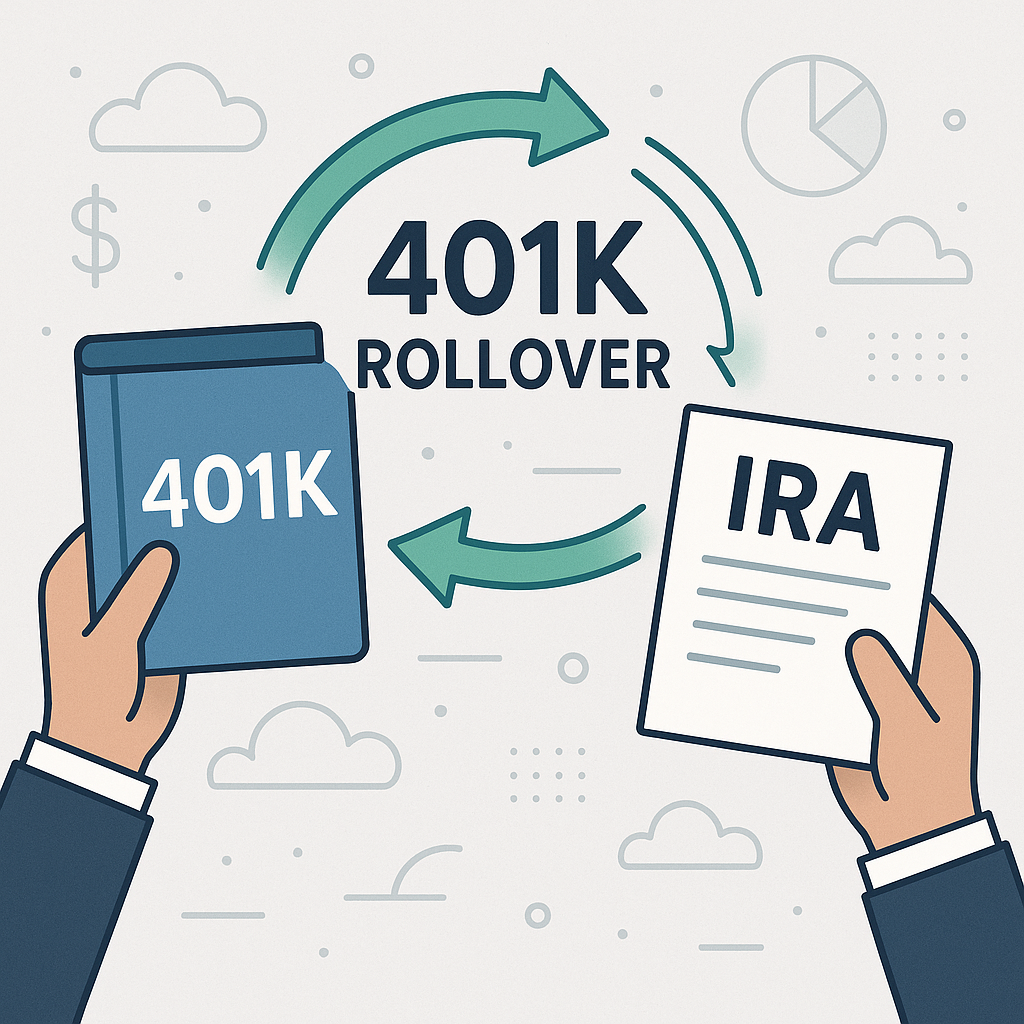Coastal Bridge Advisors | 401(k) Rollover Specialists
Wondering how to rollover your 401(k)? Whether you're changing jobs or seeking more control over your retirement assets, rolling over a 401(k) can help consolidate your savings, reduce fees, and open access to better investment options. This guide from Coastal Bridge Advisors walks you through the process step-by-step, so you can avoid penalties and make informed decisions that support your long-term financial goals.
What Is a 401(k) Rollover?
A 401(k) rollover is the process of transferring funds from an old employer-sponsored retirement plan into a new 401(k) or an Individual Retirement Account (IRA). Done correctly, a rollover maintains the tax-deferred (or tax-free) status of your retirement savings and avoids unnecessary penalties.
✅ Step 1: Choose Your Rollover Destination
Before initiating the process, decide where you want your 401(k) funds to go:
-
New Employer's 401(k) Plan
This is a good option if your new employer offers a 401(k) with competitive fees and investment options. Rolling into a new 401(k) may preserve early withdrawal options under the Rule of 55 if you leave the job at age 55 or older. -
Traditional IRA
Offers more flexibility and investment choices. Your money continues to grow tax-deferred, similar to a traditional 401(k), without being tied to employer-specific options. -
Roth IRA
If you convert from a traditional 401(k) to a Roth IRA, you’ll owe taxes on the rolled-over amount now, but future withdrawals are tax-free. This is ideal if you expect to be in a higher tax bracket during retirement.
✅ Step 2: Decide on the Rollover Method
-
Direct Rollover (Recommended)
Your funds move directly from your old 401(k) provider to the new plan or IRA. No taxes are withheld, and you avoid the risk of missing the 60-day deadline. -
Indirect Rollover
You receive the funds and must deposit them into your new account within 60 days. However, 20% will be withheld for taxes, which you'll need to replace from other funds to avoid penalties. Failure to meet the 60-day window could result in taxes and early withdrawal penalties.
✅ Step 3: Initiate the 401(k) Rollover
-
Gather Account Details
Contact both the old plan administrator and the new provider (whether another 401(k) or an IRA custodian) to collect the necessary information. -
Submit Required Paperwork
Complete rollover forms as required by each institution. Be sure to indicate whether it’s a direct or indirect rollover. -
Monitor the Transfer
Follow up to confirm the transaction is processed and completed on time.
✅ Step 4: Invest Your Funds Wisely
Once the funds arrive in the new account, you’ll need to select your investments. Choose based on your age, risk tolerance, and retirement timeline. If you're unsure, consider working with a fiduciary advisor like Coastal Bridge Advisors to develop a customized investment strategy.
⚠️ Key Considerations Before You Rollover Your 401(k)
-
Tax Implications
Converting to a Roth IRA triggers taxable income. Understand how this affects your current tax year. -
Fees and Investment Options
Compare expense ratios, account fees, and available investments across providers. -
Professional Advice
Not all rollovers are created equal. A financial advisor can help you align your rollover with your retirement plan.
🤝 Talk to a Financial Advisor About Your 401(k) Rollover
At Coastal Bridge Advisors, we specialize in helping clients navigate complex rollover decisions. Whether you’re retiring, changing jobs, or consolidating accounts, our team can help you avoid costly mistakes and ensure your assets continue to grow with your financial goals in mind.
📞 Schedule a complimentary consultation today.
Visit https://coastalbridgeadvisors.com to get started.

%20(1).png?width=508&height=121&name=flourish-primary-logo@2x%20(1)%20(1).png)




